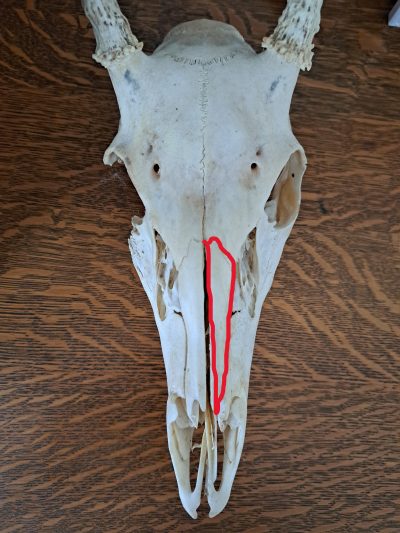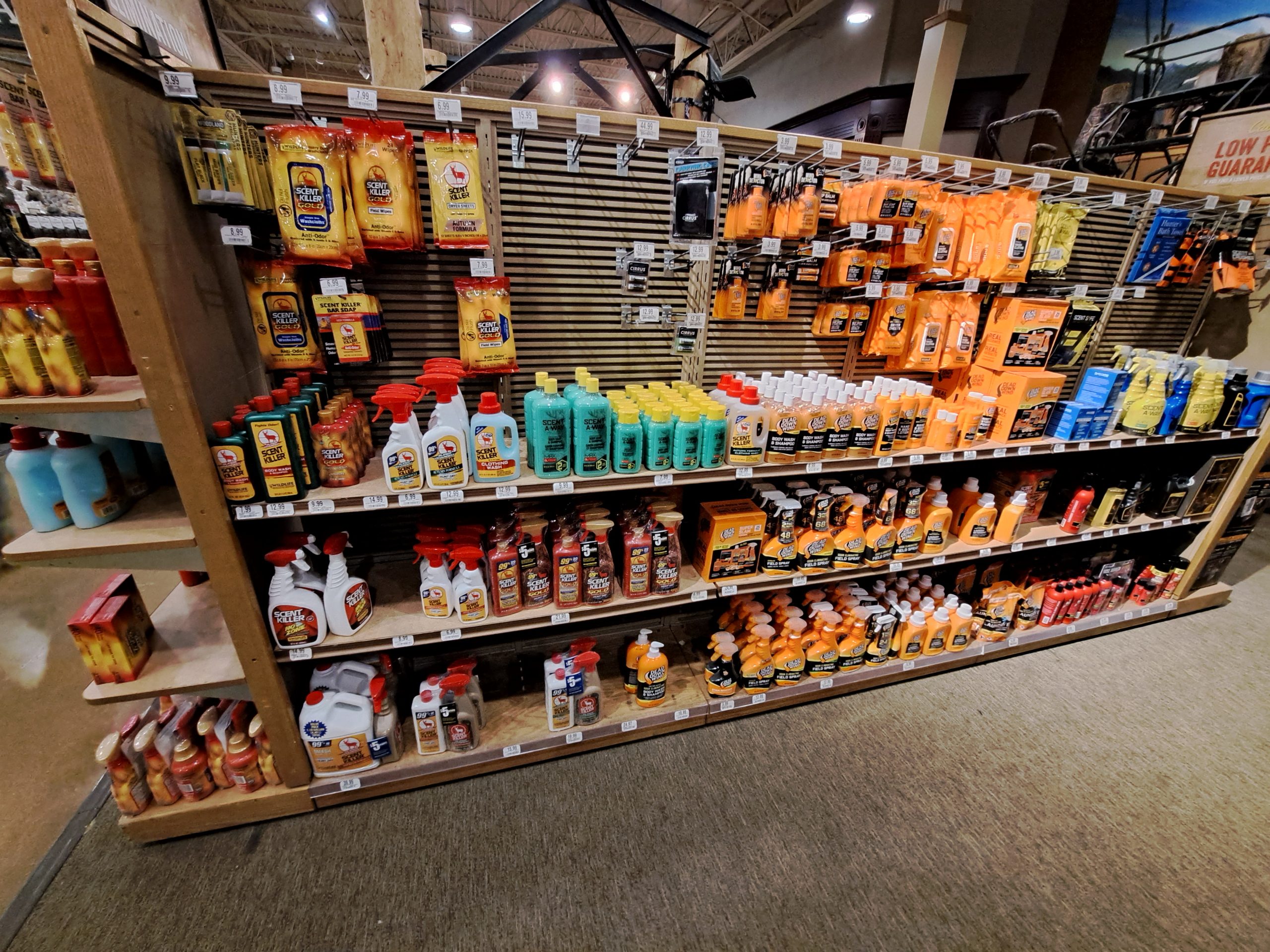Aaron F. 12.26.22

Late season deer hunting can be particularly challenging. Deer can no longer be persuaded to abandon their survival instinct the way we hope or expect them to do during peak rut. Add on a period of associating human activity with getting shot at and any hunter quickly realizes the need to eliminate any sign of their presence if they want to be successful.

Deer are prey animals and have evolved a strong sense of smell in order to evade predation. In the late season, the deer have experienced a long season of hunting pressure, and have learned to associate human scent with danger. The hunting industry has responded to this need to mask human scent with a variety of products used to eliminate human-associated odors. The problem is, humans are unable to smell well enough to verify whether these products are actually performing the functions that are claimed by the manufacturer. Further, these ingredients aren’t commonplace for your average American, which makes it difficult to verify their actual intended chemical contribution to odor-reduction. Any self-respecting hunter who works for their money would see this as an opportunity for a dishonest snake oil salesman to make a few bucks.

While the names of the chemical compounds may not hold any significance to non-chemists, each compound can be classified into one or more of the following five functional categories that makes them easier to understand.
| Ingredient | Purpose |
| Activated Charcoal | Adsorbent agent |
| Benzalkonium Chloride | Cationic surfactant and antimicrobial |
| Benzyl Alcohol | Antimicrobial |
| Cocamide MEA | Surfactant |
| Cocamidopropyl Betaine | Surfactant |
| Cyclodextrin | Adsorbent agent |
| Decyl glucoside | Cationic surfactant |
| Dicalcium Silicate | Adsorbent Agent |
| EDTA | Anti-microbial, preservative |
| Glycerin/Glycerol | Moisturizer |
| Guar hydroxypropyltrimonium chloride | Hair conditioner |
| Tocopheryl acetate (Vitamin E) | Moisturizer |
| Methylchloroisothiazolinone | Antimicrobial |
| Polyacrylic Acid | Adsorbent and Surfactant |
| Potassium Benzoate | Antimicrobial |
| Potassium Sorbate | Antimicrobial |
| Tetrasodium Glutamate Diacetate | Antimicrobial |
| Propylene Glycol | Moisturizer |
| Pyrrolidone Carboxylic Acid (PCA) | Moisturizer |
| Silver Ion Complex | Metal Oxidation Catalyst |
| Sodium Lauryl Sulfate | Surfactant |
| Soyaethyl Morpholinium Ethosulfate | Cationic surfactant |
| Subtilisin | Broad-spectrum protein digesting enzyme |
| Tetrasodium Glutamate Diacetate | Antimicrobial |
| Tocopheryl acetate | Moisturizer |
| Zeolyte | Adsorbent |
Adsorbent Agents
Adsorption refers to the surface attraction of one molecule for another. This is different from absorption, where molecules are soaked entirely into the other substance. Aromatic compounds are hydrophobic (not water soluble), and adsorbent agents are able to physically trap these compounds, keeping the odor from emanating into the surrounding environment.
Antimicrobial
The range of antimicrobial agents listed below have diverse mechanisms for interrupting biological processes that are necessary for microbial life. Regardless of the specific mechanism the end result is the same, they kill mold and bacteria. Microbes have been said to at least equal, if not outnumber, the amount of cells in the human body and are the root of human-associated body odors.
Enzymes
Enzymes are biological catalysts, meaning they are a protein made to accelerate the rate of a reaction. In this application, the reaction is the breakdown of biological molecules which could mean other proteins, starches, fats, or odor causing molecules. Many of these products listed “odor fighting enzymes” (plural) but the only enzyme explicitly listed was subtilisin. Subtilisin is what is known as a broad-specturm protease, or a protein digesting enzyme. Subtilisin is both fast-acting, and indiscriminate in its ability to digest protein. Subtilisin is common in household cleaners, cosmetics, and hygenic products for its ability to remove grime, lift stains, and remove biological material. Its applications are numerous.
Subtilisin is an exception to the rule that most enzymes end in “-ase.” This is a tell-tale sign of an enzyme if you happen to find it listed on any product not pictured here.
Oxidizers
Oxidizers work to chemically break down odor causing molecules by reacting with them. These appeared to be rare on the products surveyed, but there are a number of “homemade” odor reducers that list hydrogen peroxide as an ingredient for this use. There were also a few products that listed some form of metal catalyst, which is presumably to catalyze oxidation of odorous chemicals. As a standalone strategy, peroxide may not oxidize everything that emits scent and some compounds may be better dealt with other classes of chemical treatments. Most of these products list a combination of these chemical categories for elimination of the broadest range of molecules that contribute to odor.
Surfactants
The word surfactant is a conjoining of the word “surface active agent.” Mentioned earlier, aromatic compounds are hydrophobic and simply rinsing the body with water is not enough to remove these compounds from the skin. The presence of a surfactant allows for dissolving of hydrophobic molecules in water by lowering the surface tension between the two substances, and thereby remove these compounds from the surface of the skin.
Surfactants can be further broken down into three groups based on charge anionic (negative charge), cationic (positive charge), and anionic (no charge). Anionic detergents are in most household and personal care products due to their gentle nature. Anionic surfactants do a better job at lifting oily soils. Cationic surfactants are typically used in static fighting applications (think dryer sheets) and also have antimicrobial properties.
Moisturizer?
Most of the body washes contain some form of humectant, or skin wetting agent. In getting rid of as much odor-causing compounds as possible, some of the compounds that moisturize the skin are going to be removed. If these skin-moisturizing compounds aren’t replaced, you will get itchy, to the point where it could become difficult to sit still in the stand. Don’t be too proud to think moisturizers are only for people who wear yoga pants.
This raises another great point, anyone who tries a product and notices that their skin is dry and itchy should try a different one. There may be a compound that you are sensitive to or the product doesn’t adequately replenish the skin. The risk of treating with moisturizer possibly containing something that deer can smell isn’t worth it.
What if the container does not have ingredients listed?
Soaps, cosmetics, deodorants, and anything intended to come into contact with the human body are subject to Federal regulation specifying that all ingredients be listed on the side of the container. Clothing treatments fall outside of this regulation and therefore are not obligated to list their ingredients. The research to develop a scent eliminating product can be expensive, and it would make sense to take advantage of the difference in regulation in order to keep trade secrets. In the table above, there are two ingredients (cyclodextrin and activated charcoal, both adsorbant agents) that were not listed on any of the products that did list their components, but I strongly suspect them to be the active agent in one or two of the clothing treatments pictured above.
How can we be sure that these clothing treatments work? Arguably, treating our bodies to eliminate scent isn’t going to do much good if our outer layer of clothes are filling the environment with scent. Its an anecdotal argument, but it wouldn’t make any sense to invest all of this money into a body wash if the clothing treatment is going to undermine its effectiveness.
My day job as a chemist can cause me to be critical of chemistry-related claims that are qualitative, or unverifiable, made by a company trying to move product. Of the products pictured here, none of the ones that listed their ingredients (products that fall under Federal regulations) raised any suspicions as to being phony.
Final verdict on whether scent reduction products are a scam: nothing smells off here (sorry).

